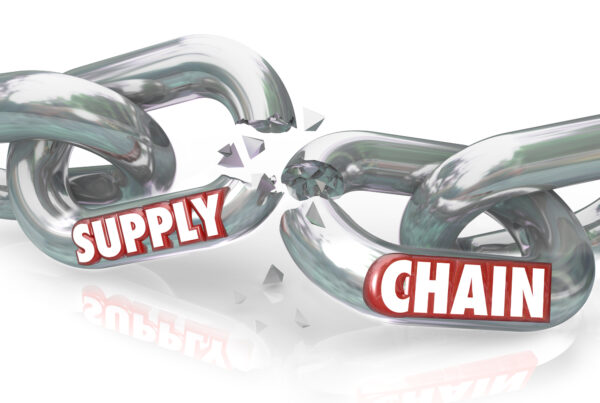While many retailers are looking at digital transformation as a way of ramping up their performance, progress has been slow. Only three percent of retail companies have completed digital transformation projects across their business, according to a market research survey released in early 2018. The vast majority of retailers investing in digital transformation have only just begun the process, with 22 percent in the planning stage, and a further 55 percent, running pilot schemes.
/the-digital-economy.png)
The slow pace of digitization in the retail industry should be a cause for concern. It suggests that retailers are not fully geared up to satisfy the demands of the contemporary, connected consumer, who due to the rise of easily accessible new technologies and the ‘always-on’ nature of the modern world, expects increasing levels of service. Consumer preferences now change quickly, and they demand retailers to provide them with what they want and when they want it. Any delay in satisfying consumer preferences, will result in lost sales opportunities and undermine customer loyalty; putting pressure on retailers to compress their lead times and business cycles to get the products that consumers want, into the right locations as quickly as possible.
The Business Need To Digitize The Supply Chain
Attempting to do this without a robust digital infrastructure in place is a virtually impossible task. Recently, a major U.S. retailer faced escalating complaints from customers who could not find the items they wanted because they were frequently out of stock; this was due to the retailer’s supply chain not being reliable enough to keep pace with what customers wanted. In response, the management team decided to invest in the digital transformation of their supply chain, to shorten replenishment times, optimize deliveries, and ultimately be able to match supply with demand. Shortly after doing so, they were able to reduce retail cycle times by 20 percent, leading to increased sales. As time goes by, they expect even better results, and the ability to achieve a 60 percent total reduction in retail cycle time.
However, this is just one example of how digital transformation, particularly of the supply chain, can help retailers meet the challenging demands of today’s consumer, generating business growth and success. The findings of significant research institutes also support this fact. Bain & Company found that retailers who integrate digital technologies into their supply chain, rapidly improve service levels while cutting costs by up to 30 percent. McKinsey discovered that companies which strongly digitize their supply chain could expect to boost their annual growth of earnings before interest and taxes by 3.2 percent – the most substantial increase from digitizing any business area, and annual revenue growth by 2.3 percent.
Transformational Capabilities
The business case for retailers to digitally transform their supply chain is beyond any doubt. The reason a digital supply chain can generate such impressive business results is that it provides retailers with the following game-changing capabilities:
- Real time visibility across the supply network, allowing retailers to view the live status of products no matter where they are along the critical path, e.g., in production, in transit, or in inventory; allowing data-driven decision making with certainty, to ensure the timely delivery of products.
- Automation of time-consuming manual data entry, such as keying in data on bookings, purchase orders or sailing schedules. Automated operations, streamline the workflow of supply chain managers, saving them hours of time, allowing them to focus on more value-added tasks, such as negotiating better vendor prices or implementing growth strategies.
- Enhanced collaboration with all relevant stakeholders, from logistics providers, to factories, to global teams and departments, all on one platform, from which information can be shared quickly and easily, rather than being spread out across multiple sources, such as spreadsheets or emails; enabling better business planning and reducing confusion and fragmentation of business processes.
All of the above features accelerate retail supply chains to lightning speeds, increasing efficiency and speed to market, and allowing retail companies to delight their consumers with timely deliveries.
The Importance of Culture
A caveat to the discussion so far, is that the digital transformation of the supply chain is by itself, not enough to improve supply chain performance and take it to the next level. Retail companies must also create a workplace culture that encourages employees across the supply chain and buying floor to collaborate more, share data and not operate in silos, to take full advantage of the benefits that a digital supply chain will provide. Both sets of employees exist to deliver the product to the consumer and should be aligned and collaborating in tandem.
Don’t Get Left Behind
According to the IDC, there is a gap in development within the retail sector between retailers who are starting to embark on the journey of digital transformation of their supply chain with a defined strategy in place, and others who are lagging with no clear goals on how to incorporate digital technology. The IDC warns that retail companies on the lower end of the spectrum are putting their competitiveness at risk; which is why it is critical that you don’t get left behind.
/dont-get-lift-behind.png)
A Phased Approach
Trying to digitize an entire supply chain all at once, can be a daunting and overwhelming prospect. The best way to start is by identifying and fixing the immediate weaknesses in the supply chain (e.g., time to market), with a long term goal to evolve entirely. Once people in the organization start to see the benefits from digitally transforming those parts of the supply chain that need it the most, the process of digitizing the rest of the supply chain to achieve even more significant benefits will organically take place. Evolution comes from robust and proactive decision making, vision and openness to change, essentially trusting both the data and the source of the data. Having real time visibility begins to install the trust element; the rest will follow naturally.
Schedule a demo with Gravity Supply Chain Solutions today to learn how we can help you digitize your retail supply chain and take your business to new heights.


/microsoft-source.jpg)


